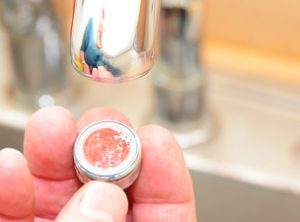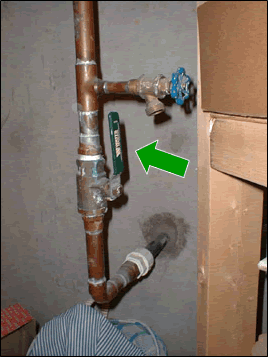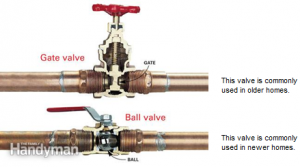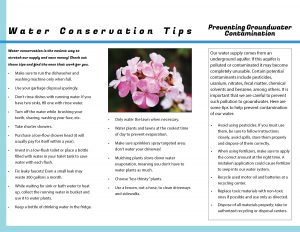Home Water Tips
After water enters a home, conditions in the home plumbing system can affect the water’s quality. Bryan Municipal Utilities Water Department works very hard to be sure that the water leaving the treatment plant meets all federal and state standards. As consumers, it’s up to us to help protect that water quality by maintaining our homes’ pipes and faucets.
To assist you, we offer these top tips for maintaining water quality at home:
- Clean faucets and aerators regularly.
- Clean and disinfect sinks and drains regularly.
- Keep drains clear and unclogged.
- Use cold water for drinking and preparing food.
- Replace old plumbing and install certified “lead free” fixtures.
- Flush cold water taps after household plumbing work or when the water hasn’t been used for several days.
- Drain and flush your hot water heater annually.
- Follow the manufacturer’s instructions for the water heater, filters, treatment devices, softeners and any other products attached to the water system.
- Do not connect hoses or other devices intended for non-drinking purposes to household drinking water faucets.
- Keep hazardous chemicals and unsanitary materials away from drinking water faucets.

Locating and Operating Your Main Water Shut-Off Valve
Knowing how and where to shut off your home’s main water supply is as important as knowing how and where to turn-off or reset an electric breaker or replace a fuse.
Every home is required to have a main water shut-off valve installed inside the home during initial construction. So for most emergencies or repairs, shutting-off the proper inside valve will be our focus.
There are also underground shut-off valves installed at the property line; if shutting-off this valve is necessary, please call our main office at 419-633-6100, follow the prompts if it is outside our main office hours.
Background
It is important to understand that different plumbing arrangements will dictate where the proper main supply valve is located:
- Home construction differs greatly; basements, crawl-spaces, and slab-on-grade.
- Water shut-off valves may have round “wheel” handles or lever handles.
Locating the proper valve
A. Basements – the shut-off valve is typically located near the front foundation wall. The main water may have come through the concrete floor or through the wall. The valve is typically within 3-5 feet of where the main water enters. In some cases, the main water may enter in a different area, like a mechanical room, up through the floor, near the water heater or furnace.
B. Crawl-space plus a basement – the shut-off valve may be where the water enters the basement or in some older homes, the shut-off may be inside the crawl space. If the latter is true, you may want to consider a secondary valve located in the basement.
C.) Crawl-space with no basement – the shut off valve will typically be located near the water heater or under the kitchen sink, but anywhere is possible. As with “B” above, it may be inside the crawl-space; in which case, you may want to consider a secondary valve located up in the living space (near the water heater or under a sink).
D. Slab-on-grade construction – the shut-off valve will typically be located near the water heater or under the kitchen sink, but anywhere is possible.


Closing the main valve (Shut-off/Turn-off)
A.) Round “wheel” handle valves will turn-off by turning the handle to the right (clockwise). It may take 2 or more full revolutions.
B.) Slowly turn level handle valves ¼ turn, until the handle is not parallel with the pipe (90 degrees). It should stop at a ¼ turn.
C.) Open a tub or sink faucet (hot & cold), on the highest level to relieve pressure and watch that spout to ensure a full shut-down. Then continue to open faucets throughout the home to drain-down as needed.
D.) If draining down home, be sure to de-energize the water heater and boiler where applicable by shutting off power to electric water heaters and any type of boiler. For gas water heaters, turn thermostat down to the pilot only setting; if you drain the heater, shut off the gas.
Opening the main valve (Open/Turn-on)
- Close all faucets except a tub or sink on the highest level.
- Partially turn-on valves slowly; extra slow for lever handles; stop after ½ revolution on wheel handle, ½ of a ¼ turn for lever handle; with water flowing, slowly turn-off highest open faucet.
- Listen for water pressure to equalize (noise ends); fully open main valve. Bleed air from lines by slowly opening (hot and cold) on all faucets, one at a time, until air stops flowing, then close each faucet; move to all others until complete.
- Only turn power on to electric water heaters and boilers after the water system is full and all air has been bled-out. If gas was turned-off, carefully following re-starting direction on the appliance jacket or call a registered plumber or your gas company for service.
Water Conservation
Between 1980 and 2000, America’s water use has more than doubled in some areas. In our town, conservation efforts by residents and local industries have helped keep water use steady. Currently, the Bryan Water Department pumps an average of 1.5 million gallons of water per day to the city at a rate of 2,000 gallons per minute. While we are fortunate to have a plentiful source of water, Bryan Water Department would like to encourage residents to conserve water. By saving water, we can also save money, energy, and the environment.
Four ways to save water:
- ECONOMIZE – Become conscious of the amount of water you are using, and look for ways to use less whenever you can.
- REPAIR LEAKS – A leak of one drop per second wastes 2,400 gallons per year. Most leaks are easy to repair with a few simple tools.
- INSTALL WATER-SAVING DEVICES – There are many devices you can buy inexpensively or make yourself, such as aerators, flow regulators, and displacement devices.
- REUSE WATER – Used water is often suitable for other purposes. Make the most of any water before you let it go down the drain.
Call a licensed plumber or the Bryan Water Department, 419-633-6100 during regular business hours if you have any questions.

